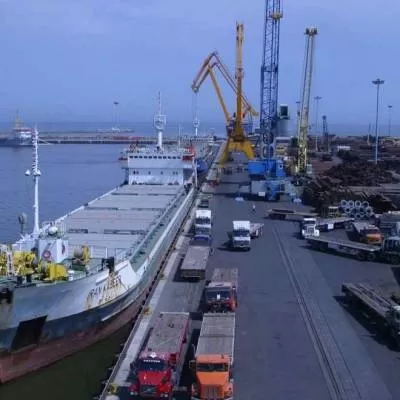

JSW Infrastructure Ltd, India?s second-largest port operator, is considering building green hydrogen and ammonia plants at its ports to diversify into this burgeoning market.
?This is a new age business that is emerging. We have been contemplating and exploring opportunities in this sector,? stated Arun Maheshwari, joint managing director of JSW Infrastructure, in an interview with the Economic Times.
Companies have approached JSW Infra expressing interest in the green hydrogen and ammonia segments, prompting the port operator to evaluate the feasibility of entering this market. Maheshwari noted that establishing such facilities would be long-term, capital-intensive projects requiring suitable land, a robust backend, and strategic port locations. ?Fortunately, both our existing and new port locations are appealing to potential players. However, we do not yet have a specific timeline for this project,? he added.
Earlier this year, the Ministry of Ports, Shipping, and Waterways (MoPSW) identified Kandla, Paradip, and Tuticorin as key ports to become future export hubs for green hydrogen, ammonia, and methanol within the next seven years, aiming to position India as a major green hydrogen exporter. Similarly, Adani Ports & SEZ announced plans for its Vizhinjam Port to become a global bunkering hub, supplying clean fuels such as hydrogen and ammonia.
JSW Infrastructure?s sister concern, JSW Energy, is also exploring acquisitions in the green energy sector. Regarding overall company growth, Maheshwari said, ?The industry guidance is around 4% to 4.5%, but our guidance is 10% to 12%.?
Focusing on growth drivers, Maheshwari highlighted the strategic importance of various terminals: ?Paradip is a key iron ore hub and a preferred port for coal and iron ore. Ennore terminal has growth potential due to its proximity to the hinterland. New Mangalore terminal is unique in its cargo handling, and Jaigarh port too has significant growth potential. Additionally, PNP Port, recently acquired, offers rail connectivity that Jaigarh lacked.?
Discussing cargo customer mix, he noted a significant increase in third-party business, which rose from 6% in 2019 to 50% in the quarter ending June. For the year, the third-party share is expected to be around 45%, with anchor customers contributing 55%.
Maheshwari also mentioned capacity additions from recent acquisitions, expecting the JNPA terminal to be operational by February-March 2025 and the Tuticorin terminal to be completed within 18 to 24 months. The company aims to complete its 2 million tonnes per annum LPG terminal at Jaigarh, a key objective from its IPO. These represent the three planned capacity additions.
Current utilisation is at 63-64%, expected to rise to 66%, with a projected utilisation for 181.5 million tons at around 66% in two years, assuming no additional capacities or assets are added.